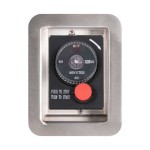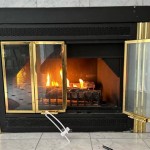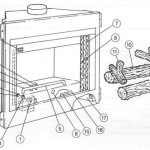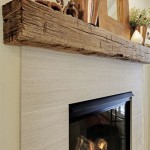Hearthmaster Gas Fireplace User Manual: A Comprehensive Guide
The Hearthmaster gas fireplace represents a significant investment in home comfort and aesthetics. Proper operation and maintenance are critical to ensure its safe and efficient performance. This guide serves as a comprehensive user manual, outlining key aspects related to the installation, operation, maintenance, and troubleshooting of a Hearthmaster gas fireplace. This document should be read thoroughly before operating the fireplace for the first time and referred to as needed for ongoing use.
This manual is intended to provide a general overview of Hearthmaster gas fireplaces. However, specific models may incorporate features or requirements that differ. Always consult the model-specific manual provided with the unit for complete and accurate information pertaining to the individual appliance. Ignoring the model-specific manual could potentially lead to unsafe operation or damage to the fireplace.
Before proceeding, it is imperative to understand the inherent safety considerations associated with gas-burning appliances. Gas leaks, improper venting, and malfunctioning components can pose serious risks, including fire, explosion, and carbon monoxide poisoning. If at any time there is a concern regarding the safe operation of the fireplace, immediately shut off the gas supply and consult a qualified technician.
Key Point 1: Installation and Initial Setup
The installation of a Hearthmaster gas fireplace is a complex process that requires a high level of technical expertise. It is strongly recommended that installation be performed by a qualified professional certified in gas appliance installation. Improper installation can void the warranty and pose significant safety hazards.
Prior to installation, it is essential to verify that the gas supply (natural gas or propane) is compatible with the fireplace. The fireplace’s rating plate will specify the required gas type and pressure. Connecting the fireplace to an incompatible gas supply can result in inefficient operation, damage to the unit, and potentially dangerous conditions.
Proper venting is paramount for safe operation. Hearthmaster gas fireplaces require specific venting systems designed to safely exhaust combustion byproducts outdoors. The venting system must be installed in accordance with the manufacturer's instructions and local building codes. Improper venting can lead to the accumulation of carbon monoxide inside the home, a deadly and odorless gas.
After installation, the fireplace should undergo a thorough inspection and testing by a qualified technician. This inspection should include a leak test of all gas connections, verification of proper venting, and operational testing of all controls and safety devices. The technician should also provide instructions to the homeowner on the proper operation and maintenance of the fireplace.
Before the first use, it is critical to purge any air from the gas lines. This process typically involves bleeding air from a designated valve near the gas valve. The specific procedure will be detailed in the model-specific manual. Failure to purge the air can result in difficulty lighting the pilot light and inconsistent burner operation.
The visual appeal of the fireplace is often enhanced with decorative logs or glass media. These elements should be arranged according to the manufacturer's instructions to ensure proper flame patterns and efficient heat distribution. Overcrowding the burner area with decorative elements can obstruct airflow and lead to incomplete combustion, potentially producing carbon monoxide.
Key Point 2: Operation of the Hearthmaster Gas Fireplace
The operation of a Hearthmaster gas fireplace typically involves a pilot light ignition sequence followed by burner activation. The lighting procedure may vary depending on the specific model, but generally involves pressing and holding a control knob while simultaneously activating a spark igniter. The pilot light should ignite within a few seconds. Once the pilot light is established, the control knob can be released, and the burner can be activated.
Many Hearthmaster gas fireplaces are equipped with a remote control, allowing for convenient adjustment of the flame height and temperature. The remote control may also include features such as a timer and a thermostat. It is important to familiarize oneself with the functions of the remote control to optimize the fireplace's performance and energy efficiency.
During operation, it is important to monitor the flame pattern and burner operation. The flames should be stable, evenly distributed, and primarily blue in color. Yellow or orange flames may indicate incomplete combustion, which can result in the production of carbon monoxide. If unusual flame patterns or burner behavior are observed, immediately shut off the gas supply and consult a qualified technician.
Hearthmaster gas fireplaces are designed with various safety features, including a flame sensor that automatically shuts off the gas supply if the pilot light is extinguished. This prevents the accumulation of unburned gas. If the fireplace repeatedly shuts off during operation, it may indicate a problem with the flame sensor or other safety components. A qualified technician should be consulted to diagnose and repair the issue.
Avoid placing combustible materials, such as furniture, curtains, or clothing, too close to the fireplace. The radiant heat from the fireplace can ignite these materials, causing a fire hazard. Maintain a safe distance of at least three feet between the fireplace and any combustible materials.
Never operate the fireplace with the glass door open or removed, unless specifically instructed to do so in the model-specific manual. The glass door serves as a safety barrier, preventing accidental contact with the hot burner and protecting against sparks or embers. Operating the fireplace without the glass door can also compromise the venting system's effectiveness.
Key Point 3: Maintenance and Troubleshooting
Regular maintenance is essential to ensure the safe and efficient operation of a Hearthmaster gas fireplace. At least once a year, the fireplace should be inspected and cleaned by a qualified technician. This inspection should include cleaning the burner assembly, inspecting the venting system, and testing the safety controls.
The burner assembly can accumulate dust, debris, and soot over time, which can affect the flame pattern and combustion efficiency. The technician should carefully clean the burner ports and remove any obstructions. The venting system should be inspected for blockages or damage, such as bird nests or corrosion.
The glass door of the fireplace should be cleaned periodically to remove dust and fingerprints. Use a non-abrasive glass cleaner specifically designed for fireplace glass. Avoid using harsh chemicals or abrasive pads, which can scratch or damage the glass.
The pilot light assembly can also require periodic cleaning. Dust and debris can accumulate around the pilot light orifice, causing it to ignite poorly or extinguish prematurely. A small brush or a can of compressed air can be used to clean the pilot light assembly.
If experiencing problems with the fireplace, such as difficulty lighting the pilot light, unusual flame patterns, or the fireplace shutting off unexpectedly, consult the troubleshooting section of the model-specific manual. The manual may provide solutions for common problems. If the problem persists, contact a qualified technician for assistance.
Never attempt to repair or modify the fireplace without the proper training and expertise. Gas appliance repairs should only be performed by qualified technicians who are certified in gas appliance repair. Improper repairs can create serious safety hazards and void the warranty.
Carbon monoxide detectors are essential safety devices for any home with a gas-burning appliance. Install carbon monoxide detectors on every level of the home and test them regularly to ensure they are functioning properly. If the carbon monoxide detector alarm sounds, immediately evacuate the home and call the fire department.

How To Light A Gas Fireplace The Home Depot

Pro Flex Hearth Master Valve Kit Straight Brushed Nickel Finish Key And In The Gas Fireplace Log Accessories Department At Com

954 Sioux Chief Hearthmaster Log Lighter Gas Straight Ball Valve W Chrome Plated 949 Key

Pro Flex Hearth Master Natural Gas Log Lighter Bar In The Fireplace Accessories Department At Com

Cast Iron Log Lighter 12 Inch For Natural Gas

Sioux Chief Pf 954 K Hearthmaster Log Lighter Straight Gas Valve Kit Black Pexuniverse

Cast Iron Log Lighter 12 Inch For Natural Gas

Pro Flex Hearth Master Valve Kit Straight Black Finish Key And In The Gas Fireplace Log Accessories Department At Com

Fireplace Key Gas Straight Valve Kit Pf 954 Kic By Hearth Master Black Plated

Sioux Chief 954 Hearthmaster Log Lighter Straight Gas Valve Kit Key Pexuniverse








